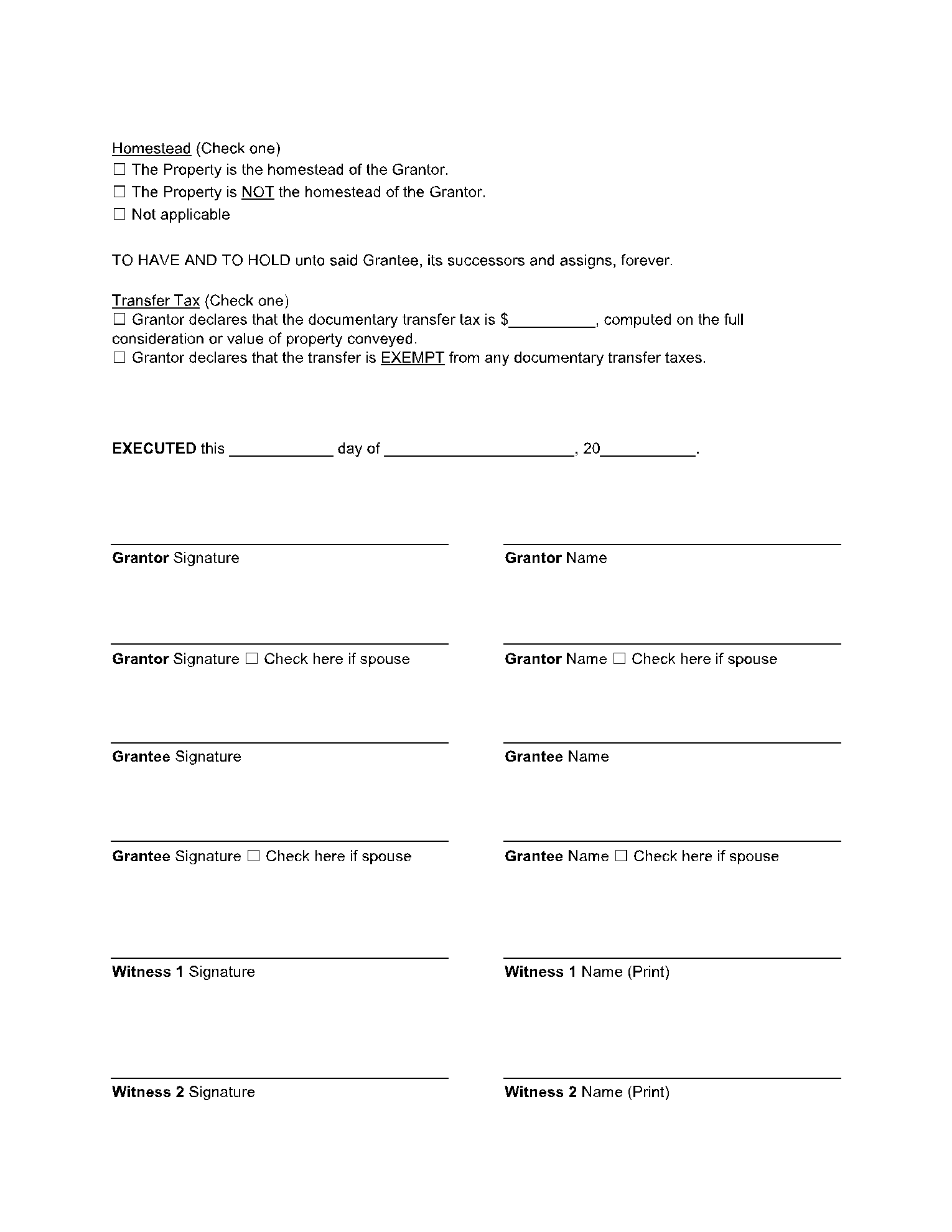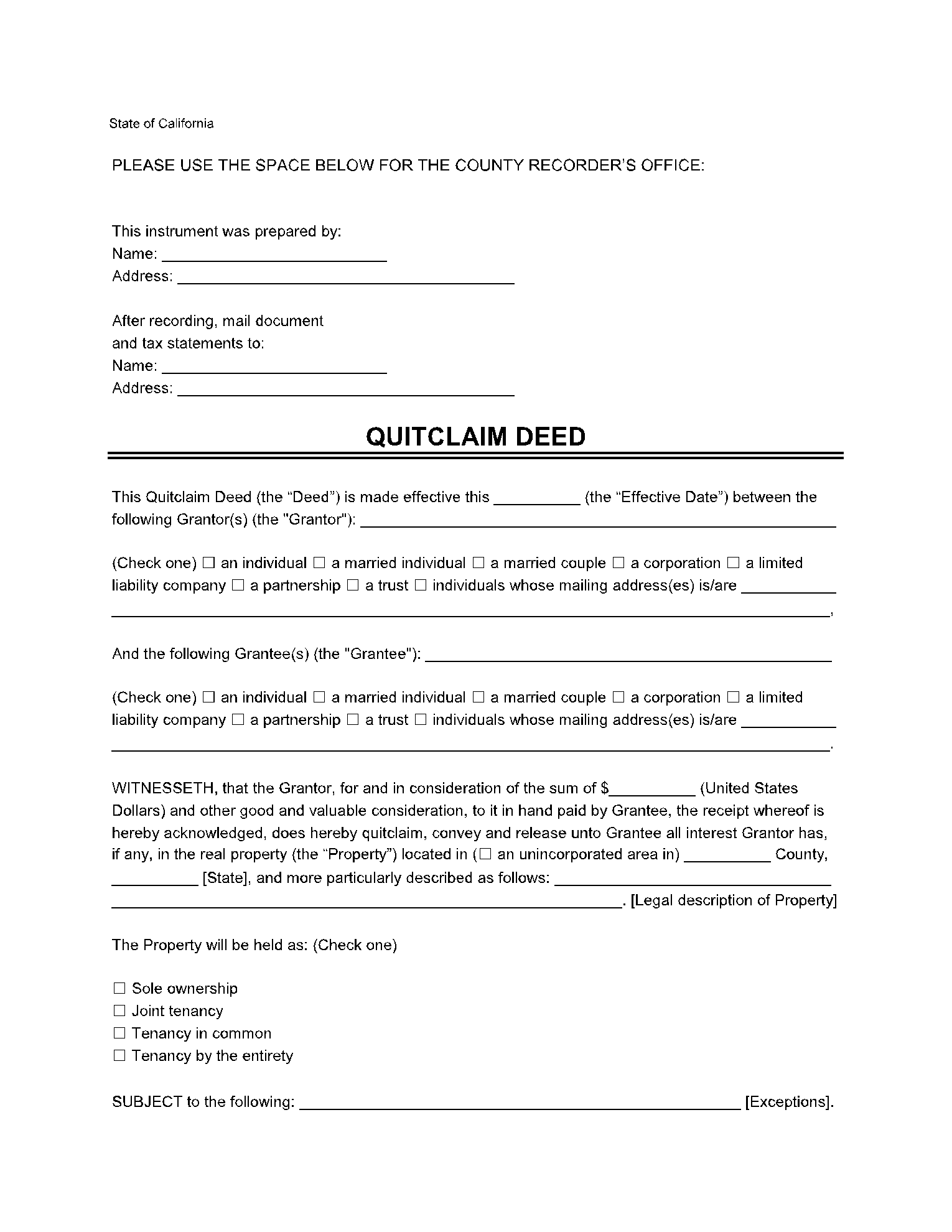There are instances when a person wants to transfer the ownership of a property to someone else, but they don’t have the title or any proof that they are valid owners. In these cases, what they are actually transferring is their interest in the piece of real estate.
The buyer agrees to buy the property without any warranty. When two parties want to make such a transaction in California, they issue a document that provides at least a minimal level of certainty. That document is the quitclaim deed California form.
What Is a California Quit Claim Deed?
The California quitclaim deed is a document issued and signed by two parties who agree on the transfer of ownership from the seller to the buyer without having the title or other way of proving they have the right to sell. The document uses the terms grantor and grantee to identify the seller and the buyer.
What the quitclaim deed form California represents is the grantor’s promise that they won’t have any future claims on the property. The risk involved when using California quit claim deed forms is that the grantor cannot prove that there aren’t any liens on the property.
So, the grantee cannot be sure that liens or valid owners won’t appear in the future; if they do occur, the grantee has no grounds to take the grantor to court. The California quitclaim deed form is written proof that the grantee agrees to buy the property, knowing there are no guarantees.
Despite not offering any security, the quitclaim deed California form is used more frequently than one would expect. There are many instances when the two parties trust each other enough not to need any written warranty. The quitclaim deed is mostly used between family members or close friends.
What Are the Requirements for a California Quit Claim Deed?
Even if it’s a document created by two parties that trust each other and need no warranty, the California quitclaim deed is still a formal document and must meet specific requirements. The first one is connected to the identification of the property sold.
In the absence of the title, authorities demand at least some form of identifying the property in the document. So, the Assessor Parcel Number must be part of the legal description in the California quitclaim deed form. You can get this number from your City/County Assessor.
The second requirement is the Preliminary Change of Ownership form. When you take the quitclaim deed to the Recorder’s Office, you must also file this form. At that point, you will also have to file the Recording form.
All these forms must be filed at the Recorder’s Office in the County where the property is located. You must also make sure that the California quitclaim deed form is notarized, and that there is a mention of the transfer tax. This tax doesn’t have the same rate in all the regions in California, so it has to be correctly calculated.
California Quit Claim Deed Laws
What makes the California quitclaim deed form a legal document, is the presence and intervention of a notary public.
Since no proof of ownership is involved, the notary only identifies the parties involved, checks the accuracy of the information included in the form, and acknowledges that the agreement was made willingly in front of the witnesses. The last item in the form must be the notary public’s state seal.
However, signing a quitclaim deed California form doesn’t prevent future conflicts or even lawsuits; valid owners may appear at a later time to claim ownership. On the other hand, signing California quit claim deeds doesn’t release the grantors from any existent financial responsibilities, like a mortgage.
What Elements Must Be Included in a California Quit Claim Deed Form?
The quitclaim deed California form is a simple document. Still, it’s crucial to make sure the relevant information is included and that it’s accurate, mostly since it will be verified by a notary public. These are the elements any California quitclaim deed form must consist of:
- The name of the person who demands the recording and who will receive the deed and tax statements (that’s usually the grantee)
- The Assessor’s Parcel Number for the property sold
- The identifying information of both the grantor and the grantee
- The location and legal description of the property
- The price
- The date of the transaction
- The names and signatures off all parties involved, including witnesses
Conclusion
If you need to transfer the ownership of a property to someone in California, without any proof that you are the valid owner, you need to issue a quitclaim deed California form. The document testifies that the grantee accepts to buy the property, knowing they get no warranty, so it’s only used between persons that genuinely trust each other.
To create a complete and accurate California quitclaim deed form, try the template from CocoSign. They offer templates for all the documents people frequently use, and they are all efficient and easy to use.

